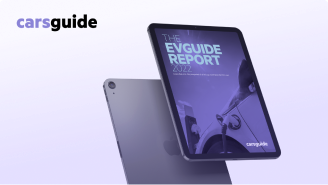
What happens when a hybrid car runs out of battery power?
- Toyota Prius
- Toyota Prius 2022
- Hybrid Cars
- Toyota Prius Reviews
- Toyota
- Rivian
- EV Advice
- Toyota Advice
- Rivian Advice
- EV
- EVs
- Hybrid
- Hybrid cars
- Plug-in hybrid
- Electric
- Electric Cars
- Green Cars
- Towing

Q: What happens when a hybrid car runs out of battery power?
A: This sounds like a reasonably simple question, but in fact, it’s all pretty complicated. That obvious answer, of course, is that, when a hybrid’s batteries are flat, the petrol engine starts up and continues to drive the vehicle while also offering up some charge to the flat battery. Fair enough, and that’s precisely how most hybrids work.
The complications set in when you consider that there are two types of batteries in a hybrid car. It doesn’t matter whether you have a conventional petrol-electric hybrid or a plug-in hybrid, there are still two distinct electrical systems on board.
Read more about Hybrid cars
There’s the high-voltage one that powers the electric motor that drives the car, and a more conventional 12-volt system that is used for starting the petrol engine (and powering other systems unrelated to the driveline).
But the distinctions don’t end there, because there’s also a big difference in what happens when either of those batteries is simply flat (depleted) or has completely died (no longer functions as a battery).
Given there are now lots of different solutions to how to make a hybrid car work, this advice should be treated as a guide rather than a definitive piece.


Download the EVGuide Report, 2022
Australia's one-stop snapshot of all things relating to electric cars.
That’s because some carmakers choose to do things differently. (For instance, there’s the more common layout of having both the petrol and electric motor power the car, or the alternative of using the petrol engine only to charge the batteries and never driving the wheels. Both these arrangements can have different outcomes when a battery drops dead or goes flat.)
If the high-voltage battery system simply runs out of charge, the petrol motor will chime in to recharge it. This is what happens every time you drive a hybrid in normal mode (not pure EV mode).
Interestingly, the car’s computer won’t allow the high-voltage batteries to become fully depleted, as this can damage them.

So, even if the car was out of petrol and running purely on battery power, it would roll to a stop with a small percentage of charge still in the batteries. Not enough to move the car, but enough to prevent battery damage.
If the high-voltage battery completely dies, however, the car won’t be able to be driven at all, in most cases. The car will detect that a catastrophic failure has occurred and will put a stop to all motion to avoid damaging anything else.
The first signs of a dying main battery will be increased fuel consumption and having the petrol engine running more and more often. It can happen over months, too, so the driver may not notice the incremental change.
If the 12-volt battery system fails, the petrol engine will be unable to start and that will also generally put a stop to play even if the high-voltage batteries are fully charged.
Some hybrids such as the Toyota Prius give you three attempts to start the petrol engine after which, the car actually needs to be reset.

That’s also the case if the petrol engine runs out of fuel. Simply adding fuel won’t get things moving until the fault code has been deleted.
Some later hybrid designs, however, will run purely on petrol (provided the 12-volt system can start it) but different manufacturers have different strategies for these eventualities.
Cars with an EV-only mode are most likely to have a function whereby a car out of petrol will be able to run on pure electricity.
Mild hybrids (where the high-voltage battery is very small and only serves to add a little torque here and there) can be driven with depleted or dead battery packs but, of course, will be stranded if the 12-volt system is out to lunch.
That said, in most cases, they can be jump started from another vehicle like a conventional car.

Provided the car’s high-voltage battery is depleted rather than dead, any battery powered car (EV or hybrid) can be recharged by a roadside generator.
In most cases, however, a roadside assistance provider is unlikely to be familiar with every permutation of every hybrid, and a tow-truck to a workshop remains the most likely outcome, rather than a roadside guessing game.
That’s partly because a hybrid that can’t start its petrol engine to charge the batteries probably has something else wrong with it.
The concept of towing a hybrid or EV with a flat battery has also surfaced with the Rivian pick-up which can technically be charged while it’s being towed.
However, most manufacturers don’t recommend this as the lack of a neutral gear in the transmission could allow the batteries to overcharge and then overheat.
Aside from anything else, flat-towing (where the towed vehicles wheels are all on the ground) is not allowed by law in most states of Australia.










Comments